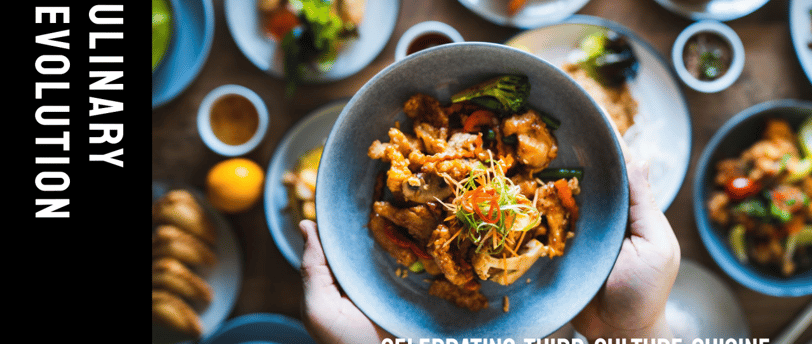The Rise of Third-Culture Cuisine: A Celebration of Global Diversity
In the ever-evolving landscape of global cuisine, a new and exciting trend has emerged: third-culture cuisine. This unique culinary movement is a reflection of the diversity and fluidity of cultural identity in today's interconnected world. At its core, third-culture cuisine is about the blending of different culinary traditions to create something new, innovative, and authentic.
Felipe Saint-Martin
8/20/20242 min read


In the ever-evolving landscape of global cuisine, a new and exciting trend has emerged: third-culture cuisine. This unique culinary movement is a reflection of the diversity and fluidity of cultural identity in today's interconnected world. At its core, third-culture cuisine is about the blending of different culinary traditions to create something new, innovative, and authentic.
What is Third-Culture Cuisine?
Third-culture cuisine is a term used to describe the fusion of different culinary traditions, often resulting from the experiences of individuals who have grown up in multiple cultures. This can include people who have immigrated to a new country, those who have been raised in a multicultural family, or individuals who have been influenced by different cultures through travel or other experiences.
The Beauty of Third-Culture Cuisine
Third-culture cuisine is not just about combining different ingredients or cooking techniques; it's about creating a new culinary identity that reflects the diversity of one's experiences. It's a celebration of the fluidity of cultural identity and the beauty of cultural convergence. As Hetty McKinnon, a chef and food writer, notes, "Third-culture cooking is not just about fusion; it's about creating a new culinary identity that reflects our experiences and backgrounds." McKinnon's own culinary journey is a perfect example of this. Growing up in Australia as a Chinese immigrant, she was influenced by both Asian and Western cuisines, which she combines in her cooking to create something unique and authentic.
Examples of Third-Culture Cuisine
Third-culture cuisine can take many forms, from the blending of Asian and Western flavors to the fusion of African and Latin American cuisines. Some examples of third-culture cuisine include:
Wafu Italian, a fusion of Japanese and Italian cuisines
Korean-American cuisine, which combines the bold flavors of Korean BBQ with the comfort food of American cuisine
Filipino-British bakeries, which blend the sweet and savory flavors of Filipino cuisine with the traditional baking techniques of British cuisine
The Rise of Third-Culture Cuisine in the Food Industry
Third-culture cuisine is not just a trend; it's a movement that is changing the way we think about food and cultural identity. In the food industry, third-culture cuisine is becoming increasingly popular, with chefs and restaurants around the world embracing the diversity and creativity of this culinary movement. As noted in a recent article on LinkedIn, "Third-culture cuisine is not just about fusion; it's about creating a new culinary identity that reflects our experiences and backgrounds." This movement is not just about food; it's about cultural exchange, understanding, and appreciation.
Third-culture cuisine is a celebration of the diversity and fluidity of cultural identity in today's interconnected world. It's a reflection of the beauty of cultural convergence and the creativity of individuals who are pushing the boundaries of culinary traditions. As we continue to explore and celebrate third-culture cuisine, we are reminded that food is not just about sustenance; it's about culture, identity, and community.
